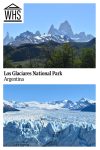Los Glaciares National Park
By Alex Trembath
What is Los Glaciares National Park?
Los Glaciares National Park is a remote landscape of breathtaking natural beauty, situated in the depths of Patagonia in southwest Argentina. Incorporating parts of the Southern Patagonian Ice Field – the world’s second-largest extrapolar ice field and third-largest reserve of freshwater – the park is known for its colossal glaciers, most notably Perito Moreno Glacier.
Disclosure: This article contains affiliate links. Making a purchase through an affiliate link will mean a small commission for this website. This will not affect your price. Privacy policy.
The western boundary of the national park is lined by the Andes Mountains at Argentina’s border with Chile, and at its heart lies Lago Argentino, the largest freshwater lake in Argentina.
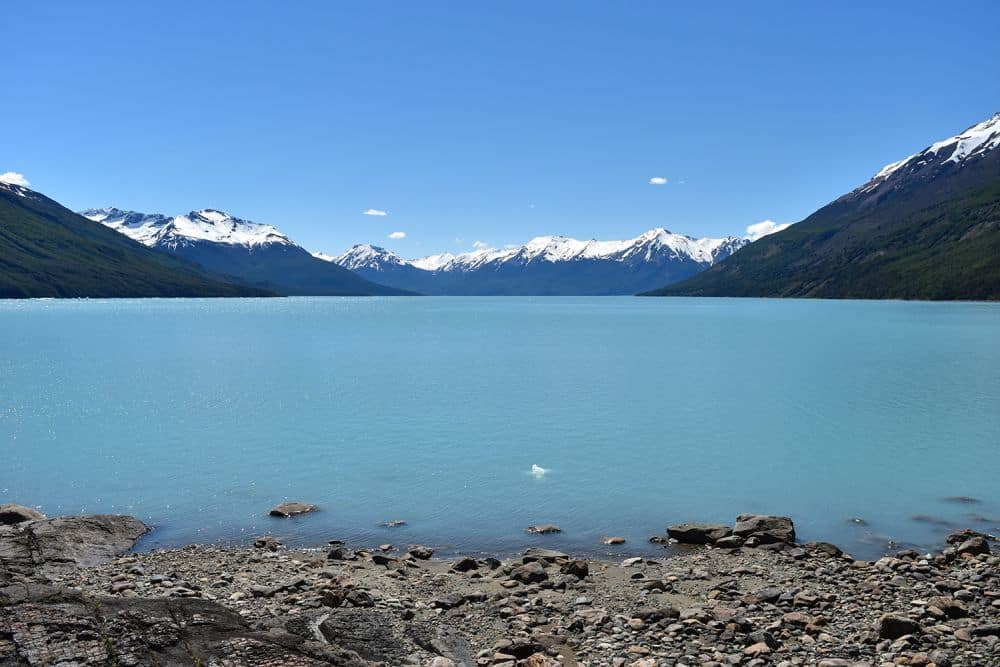
Perito Moreno Glacier sits at the southern end of the park, while the north side is marked by another of Patagonia’s most iconic natural landmarks, Mount Fitz Roy. This jagged granite mountain draws hikers and climbers from all over the world.
Why is Los Glaciares a UNESCO World Heritage site?
Los Glaciares National Park is recognised as a UNESCO World Heritage site due to its remarkable natural beauty, geographical significance and unique biodiversity, as UNESCO states:
“Los Glaciares National Park is embedded into the enchanted and remote mountain landscape of the Patagonian Andes. Dominated by rugged granite peaks exceeding 3,000 m.a.s.l. [9,850 feet], the landscape is modelled by massive, ongoing glaciations. About half of the large property is covered by numerous glaciers, many of which belong to South America’s largest ice field. Despite the name’s focus on the impressive glaciers there is a remarkable landscape diversity encompassing a large altitudinal gradient of more than 3,000 metres and very diverse ecosystems.”
In addition, Los Glaciares is an important location for scientific research into the process of glaciation and its effects on the land in past epochs as well as today.
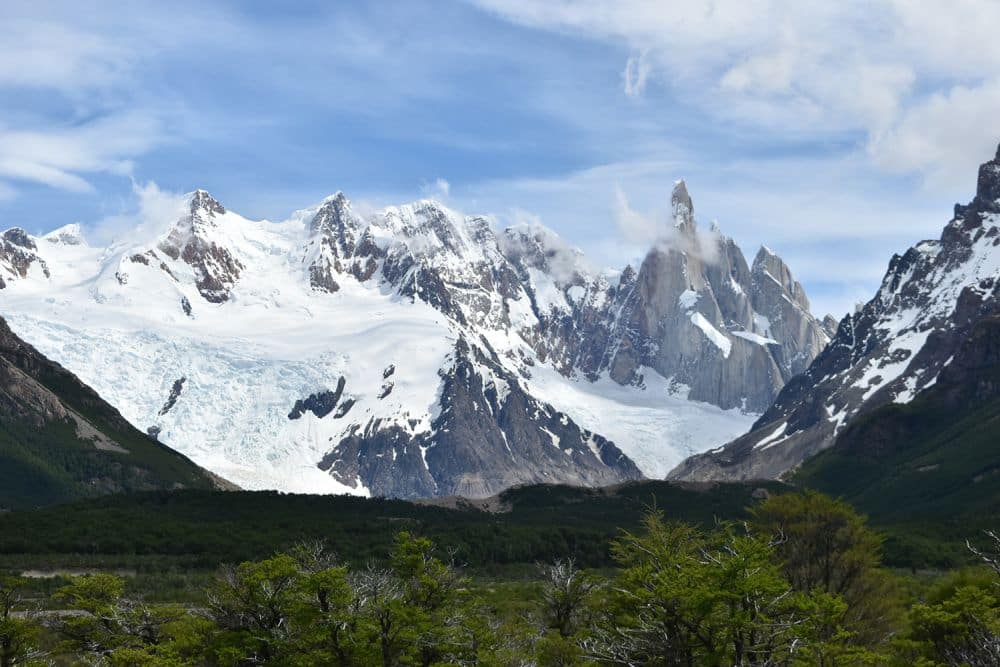
What can you expect on a visit to Los Glaciares?
The lakeside town of El Calafate and the mountain village of El Chaltén are the two most convenient bases for exploring the highlights of Los Glaciares National Park, at the south and north respectively. The two bases are separated by a bus journey of about three hours, and we spent a few days in each of them to explore the surrounding landscapes during a month in Patagonia.
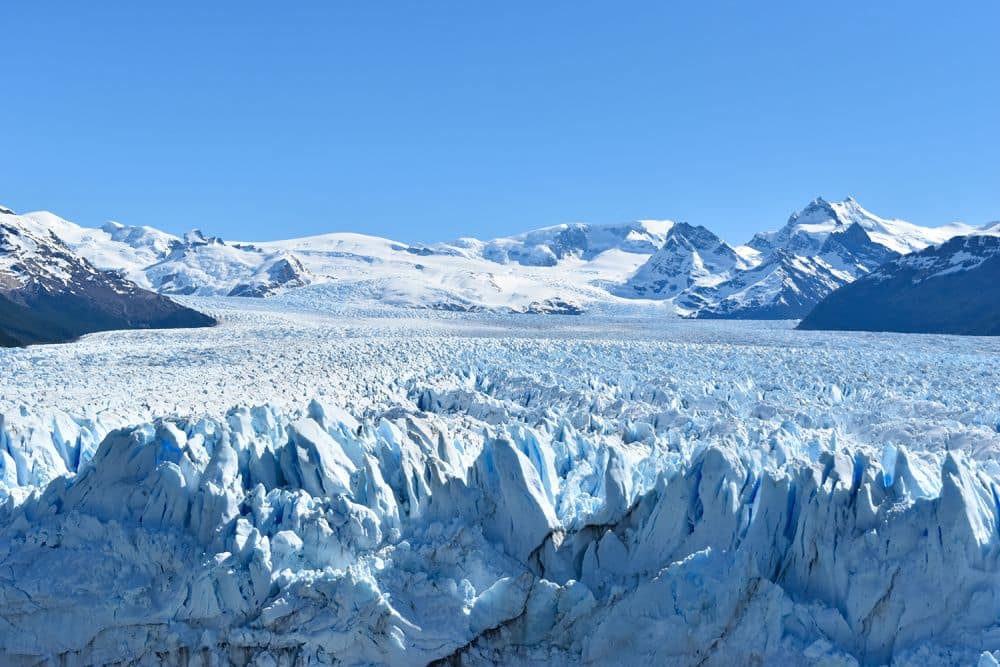
From El Calafate
El Calafate is the launchpad for visiting Perito Merino Glacier, a 70-metre-high (230 feet) wall of ice that stretches 5 kilometres (3 miles) wide and covers around 250 square kilometres (97 square miles). Until recently it was one of the world’s only glaciers to still be advancing, but it has now been retreating since around 2020 due to the effects of climate change.
You can take organised tours to the glacier from El Calafate. Some include boat rides in front of the glacier wall, and you can also take trekking excursions onto the ice field itself. Alternatively, a more affordable option is to travel to the glacier independently by bus. When arriving you will need to pay an entry fee to the national park.
At the glacier there is a boardwalk that leads to a viewing area on one side of its wall. This is a gentle walk, no more than about half a kilometre in total. We were blown away by the sheer scale of the glacier, and the immense noise created by occasional ice calving from its wall. Make sure you stay within the designated boundaries, as the falling ice can be lethal.
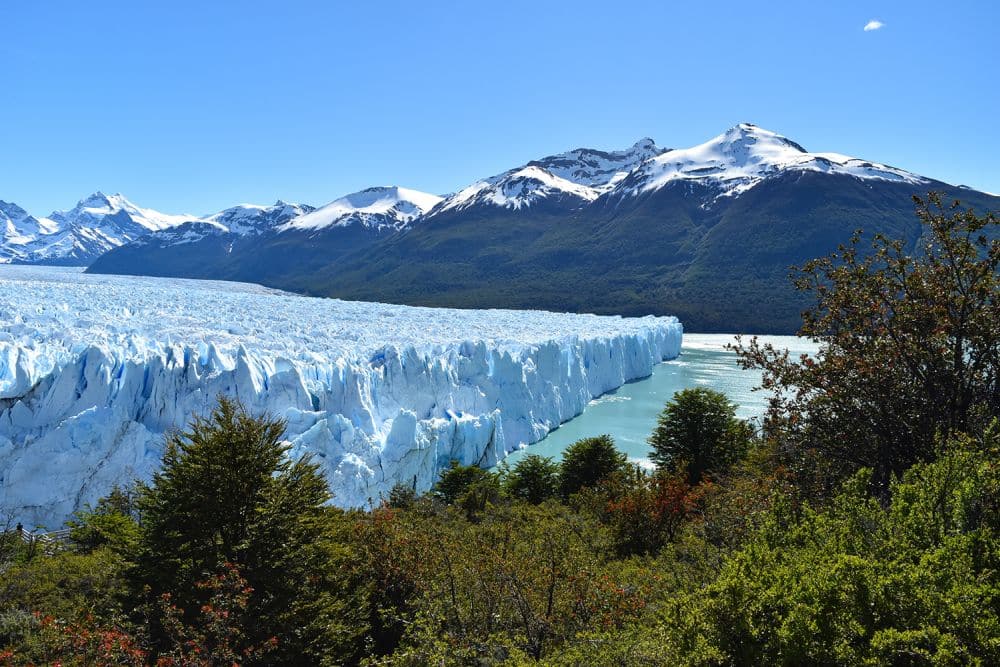
From El Chaltén
El Chaltén is the gateway to some of the most beautiful hikes in Patagonia. Well-marked trails from the village lead into Los Glaciares National Park and to two of its most recognisable peaks, Mount Fitz Roy and Cerro Torre.
Viewpoints close to each of these mountains can be reached via moderate return day hikes from the village. We chose to make it a three-day trail, camping overnight inside the park. We had our own gear, but you can hire it from the village if needed. The hiking trails from El Chaltén are well kept, on gentle terrain, and marked with kilometre posts along the way, making it easy to keep track of your progress.
On the first night of our trek we pitched up at Campamento Poincenot, a free campsite at the foot of Mount Fitz Roy. If you get up before dawn you can hike up around 400 metres (allow an hour) to see the famous sunrise view of Laguna de los Tres beneath the mountain face.
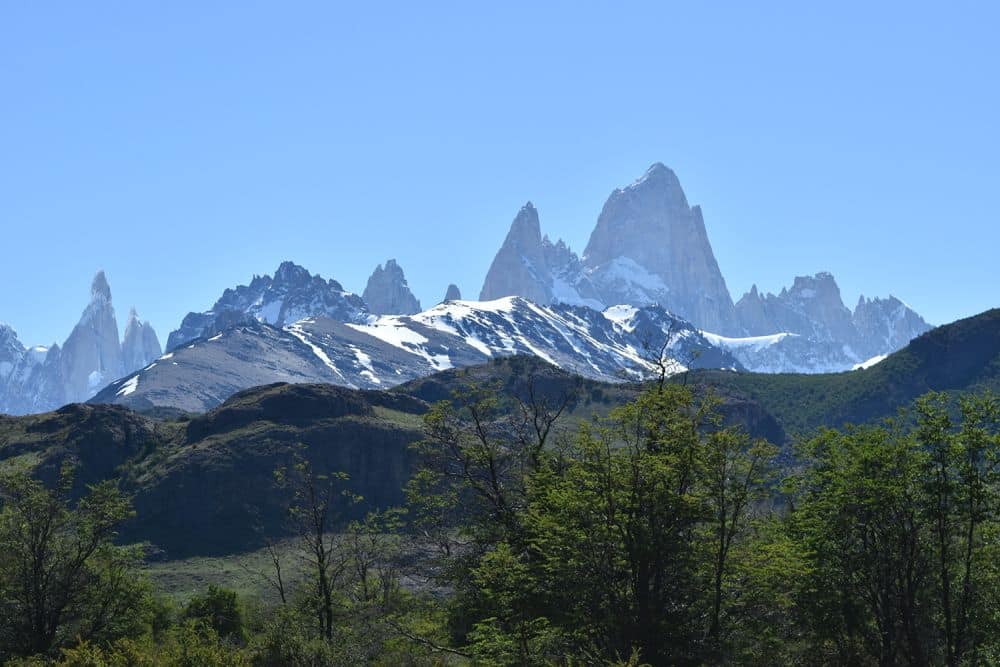
Another free campsite, Campamento de Agostini, sits near the shores of Laguna Torre, where you can enjoy tremendous views of Cerro Torre. We made a short sunset hike from here around to Mirador Maestri, where you can catch a glimpse of Torre Glacier, another outlet of the Southern Patagonian Ice Field. Keep your eyes and ears peeled along these trails; a highlight of our trek was a close-up encounter with a huge and very beautiful Magellanic Woodpecker.
When you return to El Calafate and El Chaltén respectively from your adventures, you can expect warm hospitality, including traditional Patagonian BBQs and a growing local trend for craft beer.
Book your accommodations in El Chaltén and/or El Calafate.
Is Los Glaciares National Park worth visiting?
Due to its remoteness, Los Glaciares National Park is an expensive and time-consuming challenge to reach, but it is also a once-in-a-lifetime experience that is well worth the money and effort. The natural spectacle of the Southern Patagonian Ice Field surrounded by Andean mountains and glacial lakes is a scene that is not replicated anywhere else in the world.
What sorts of travelers would like Los Glaciares?
Los Glaciares National Park, and Patagonia in general, offers some of the world’s best opportunities for hiking, mountaineering and kayaking, and so it is most popular with outdoor enthusiasts.
However, you do not need to be an avid hiker to visit the park and see its most famous landmarks. You can reach the face of Perito Moreno Glacier by public bus or on an organised tour. Mount Fitz Roy is visible in all its glory from viewpoints in El Chaltén. You can also visit attractions within the towns, such as Glacarium, an ice museum in El Calafate.
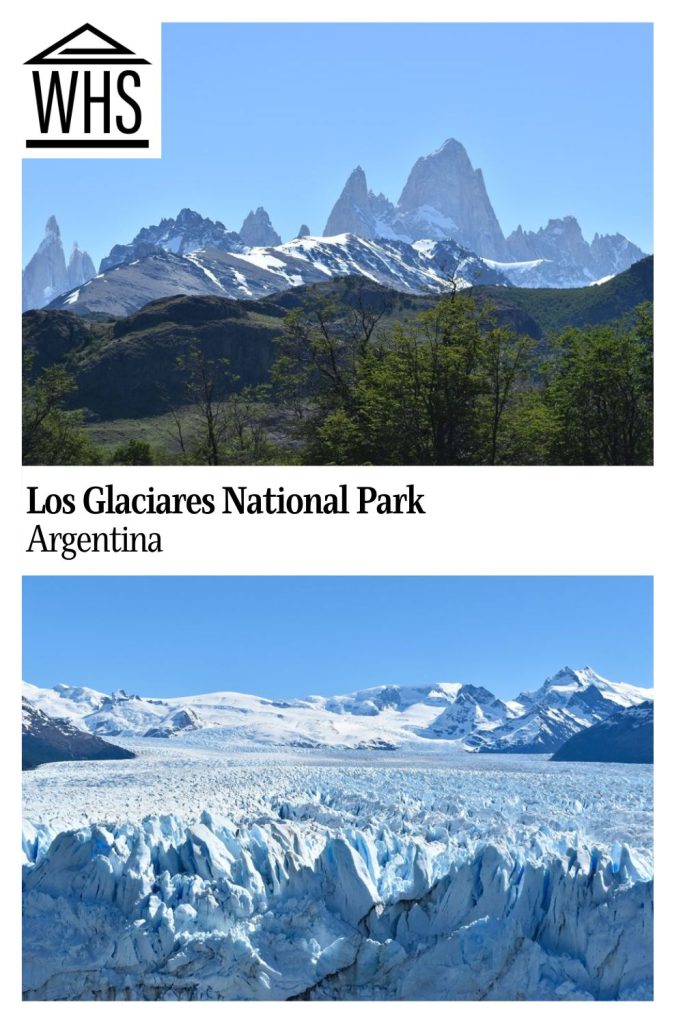
Tips for visiting Los Glaciares National Park
The high season for visiting Los Glaciares National Park is in the Southern Hemisphere summer, from December to February, when the weather is at its warmest in Patagonia. However, this is also when attractions like Perito Moreno Glacier will be at their busiest.
We visited during the “shoulder season” of spring, in October–November. You can still expect mild temperatures at this time, with the additional benefits of blooming flowers and fewer tourist crowds. The post-summer shoulder season in March–May is also a good time to visit.
Make sure you bring sturdy hiking gear if you are planning to get on the trail, especially boots.
If you’ll be spending more time in Argentina, consider some of its other UNESCO sites.
Where is Los Glaciares National Park ?
Los Glaciares is on the Argentina side of Patagonia, close to Torres Del Paine National Park, which sits just across the border on the Chile side. The park is vast, covering more than 7,000 square kilometres (2,700+ square miles).
The most direct way to reach the park is by flying to El Calafate International Airport. In most cases you will need to connect via Buenos Aires. Once you arrive in El Calafate, the easiest way to navigate the region is by bus. There is a bus transfer from the airport that takes about 20 minutes. Car hire is available, but expensive.
Alternatively, you can reach El Calafate or El Chaltén via long bus journeys. Or you can reach it on a road trip travelling overland through Argentina on the famous Ruta 40 national highway. It is more than 5,000 kilometres (3,100 miles) long in total!
Los Glaciares National Park is open throughout the full hiking season, from September to April. There is reduced access in the winter months when weather conditions can make entry unfeasible.
For more information about Los Glaciares, its rules, fees, etc. see its official website (in Spanish – use Google Translate).
Have you been to Los Glaciares National Park? If so, do you have any additional information or advice about this UNESCO World Heritage site? Please add your comments below!

